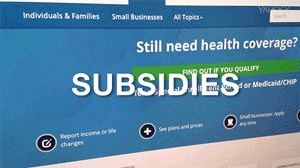Premiums, Deductibles, Copay: The Millennial’s Guide To Health Insurance

In most circumstances, milestone birthdays are a cause for celebration.
From the sweet sixteen, to the official foray into “adulthood” at eighteen, to the first (legal) drink at midnight on the night of our twenty-first, we dreamed of these moments and relished in their fruition.
After turning 25, it didn’t seem like there were many of these important numbers left. However, after the induction of the Affordable Care Act, another milestone birthday was added to the list: 26.
Turning 26 now marks our generation’s maiden voyage into a world without the shelter of our parent’s health insurance plans. For some, this transition will be seamless and may have started as soon as the first day on a full time job. For others, navigating the health insurance arena is akin to entering a world unknown. Whether you’re newly 26 and looking for a plan or looking into health insurance options at your new job, here are some basics about choosing the right plan for you.
Know the law.

The world of health insurance is constantly changing, especially with the introduction of the Affordable Care Act which was signed into law in 2010. Americans who do not purchase a plan are subject to a fee, which, in 2016, is either $695 per individual or 2.5 percent of the household income, according to healthcare.gov. The uninsured individual will pay the higher of the two calculated fees. Practically speaking, it doesn’t make sense to skip out on health insurance, especially when the fee for not buying a plan is almost as much as purchasing a plan and reaping the benefits of quality healthcare. This law also prevents insurance companies from discriminating against Americans with pre-existing conditions.
Know yourself.

Before considering what kind of plan you’ll need, make a list of the current doctors or health providers that you see, medications or prescriptions that you take, and extra services that you use, such as dental or vision care. Remember that this includes therapists and mental health providers as well! Do you see many specialists or do you tend to see your family doctor only once a year for your annual well visit? Keep this in mind, as it will be important when choosing a plan. Also, if you’d like to continue seeing the doctors you see now, contact their offices to see which insurance plans they accept and which ones they do not.
If you don’t have long standing relationships with any health care providers, see which providers have convenient locations in your area. You’ll want this information whether you are accepting your employer’s health insurance plan or purchasing an individual one.
Know the language.

There are so many terms to understand when speaking about health insurance, you could consider it a separate language. It can be confusing to understand the descriptions of the plans when you read them if you don’t understand a few common phrases, so here is a quick and easy guide.
Premium:
Consider this your monthly insurance payment, which guarantees that you will have coverage for the amount of time in the terms of your insurance agreement. If you have coverage through your employer, this will most likely come directly out of your paycheck.
Deductible:
This is the maximum amount of money you will have to pay out of pocket. After this amount, the insurance company is responsible for your medical expenses.
Copay:
Your copay is the fixed fee that you pay up front when you have an appointment, pick up a prescription, go to the emergency room, or have an exam. These vary depending on the service provided. For instance, your copay to see your dermatologist might be $30, but your copay for a visit to the emergency room could be $100.
Coinsurance:
Think of coinsurance as the percentage breakdown of the medical fees that your insurance covers. For instance, some appointments such as a well-visit (considered preventative care) might be 100 percent covered by your insurance, meaning you pay nothing for the visit. For other services, such as an elective procedure, your insurance may cover 80 percent of the medical fees, leaving you to pay the remaining 20 percent.
Know the plans.

When you’re finally prepared to choose a plan, you have a few different types of insurance to consider. Most of these plans work in terms of varying premiums and deductibles, which determine how much you would pay per month and overall throughout the entire year.
Knowing your budget is an important part of this process, and will determine whether you can afford a plan with a high or low premium. Although there are several different types of providers, the two most common types of health insurance provider you’ll see are HMOs and PPOs. Both of these plans are generally comprehensive and will cover everything from doctor appointments to emergency room visits, as well as laboratory testing and hospital stays.
HMO stands for “Health Maintenance Organization,” and is typically a type of plan where you must see health care providers within the specific network that the HMO designates. In an HMO, your primary care physician (PCP) is responsible for coordinating your care, and you will need a referral from her or him if you want to see a specialist.
In contrast, a PPO (“Preferred Provider Organization”) is a type of plan where you are free to see doctors in or out of the provided network, however, out-of-network visits are typically very expensive. In this type of plan, referrals are not needed, and you may make appointments with specialists directly. If you are accepting a plan through your employer, you’ll have to go with whichever plan they have chosen (either HMO or PPO).
If you’re using the Marketplace to shop for a plan, you’ll be able to choose for yourself. Plans on the marketplace fall into four categories: bronze, silver, gold, and platinum. These brackets designate the dollar amount of premium and deductible you’ll be responsible for, as well as the span of coverage you’ll receive with your plan.
In order to use the Marketplace, visit healthcare.gov and enter your zip code to see what plans are available in your area. Some plans start as low as $100 per month, but may have very high deductibles. Some plans are more expensive per month ($400 and up) but have lower deductibles and provide more coverage. Take into account the list of doctors and medications that you made earlier, as well as your budget. Do you see many specialists and take more than one medication? You might want to look for a plan that has a higher premium per month, which will give you more coverage and a lower deductible. Do you see your family doctor only once a year and take only one or no medication at all? Then a low premium, high deductible plan might be right for you. However, if an unexpected event were to happen (such as a pregnancy, an injury, or a sudden sickness) you may be responsible for a higher amount of those medical bills due to your high deductible. Explore all of the options in your area as well as the coverage that each different plan provides.
Know the prices, dates, and details.

There are always details in the fine print, so be sure to read about your plan thoroughly before you choose to purchase it! Some plans include special perks like a health savings account, which provides a yearly allowance for health related expenses. This can include anything from blood work for an STD screen to contact lens solution and toothpaste during a late night pharmacy run. Other plans provide incentives for physical activity and fitness, and may even reimburse your gym membership.
Another thing to keep in mind is the availability of plans for those who earn an income below the Federal Poverty Line (this is usually around $11,000 per individual). If your income is around this amount, you may qualify for healthcare through a program like Medicaid, which provides care for those with limited assets. Also remember that some pharmacies (like Walmart and Target) offer many generic medications for $4, which can really help cut the costs of some prescriptions depending on the coverage your plan provides for them.
The period of enrollment for the Marketplace health insurance plans in 2016 closed on January 31, but you still may qualify to choose a new plan. If you have experienced a “life changing event,” such as turning 26 and losing your parents coverage, you will most likely be eligible for a plan. Use the Marketplace Screener to see if you qualify for a special enrollment period. Life changes like getting married, having a baby, or moving to a new location can also qualify you for special enrollment status. If you don’t qualify for this enrollment period, fear not! Enrollment for 2017 starts this fall. Keep checking the Marketplace for details.
Know it all.

Although it seems overwhelming, with a little time and research, you can learn exactly what you’re looking for in a health insurance plan. Resources like healthcare.gov and hhs.gov (US Department of Health and Human Services) can help you become familiar with what you need and what is available to you.
When you finally commit to a plan, you’ll enjoy the peace of mind that comes with knowing you have access to quality healthcare. Congratulate yourself! You’re now a well-informed (and healthy!) adult. Paying medical bills is certainly not one of the more enjoyable privileges of being a 26-year-old, but once you know the basics, finding a health insurance plan doesn’t have to be as big of a headache.





